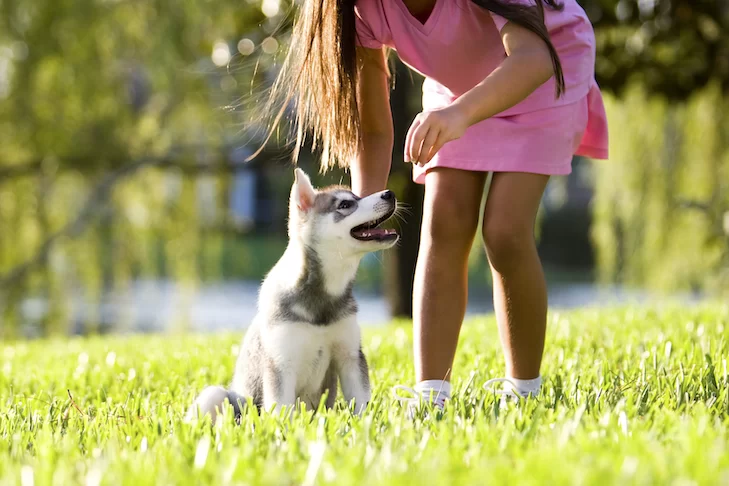Training Your Dog to Be Comfortable with New Environments
As a dog owner, one of the most important things you can do is help your dog feel comfortable and at ease in new environments. Whether you’re moving to a new home, taking your dog on vacation, or simply visiting a friend’s house, new places can be overwhelming for dogs. I’ve faced this challenge firsthand with my dog, Bella, who’s always been a bit nervous in unfamiliar surroundings. Through trial and error, I’ve learned several techniques that can help any dog adjust to new environments, and I’m excited to share them with you!
1. Understanding Dog Anxiety in New Environments
Before diving into training techniques, it’s important to understand why dogs may feel anxious in new environments. Dogs are creatures of habit, and any change in their routine or surroundings can trigger feelings of uncertainty and fear. For instance, Bella would often become jittery and hesitant when we would take her to new places, like the vet or even a friend’s house. She would cower, refuse to explore, and sometimes even become overly protective of me. Understanding these behaviors was key to helping her adjust, and it made me realize that patience and consistency are essential when working with a dog experiencing anxiety.
1.1 Signs of Anxiety in Dogs
Dogs may show signs of anxiety when they’re in new environments, such as:
- Excessive panting or drooling
- Shaking or trembling
- Refusing to explore or interact with others
- Barking excessively or whining
- Following you closely or seeking constant reassurance
When Bella first started showing signs of anxiety, I realized that addressing the root cause—her fear of unfamiliar places—would require gradual exposure and positive reinforcement. It wasn’t a quick fix, but it worked in the long run.
2. Preparing Your Dog for New Environments
The first step in training your dog to feel comfortable in new environments is preparing them for the experience. With Bella, I started by introducing her to new places in a controlled, calm manner. Here are the steps that worked for us:
2.1 Start Small with New Experiences
If you’re planning to take your dog to a new environment, start with small, manageable outings. For example, I began by taking Bella on short car rides to parks or quieter areas before introducing her to busier places like dog parks or pet-friendly stores. This gradual approach allowed her to adjust at her own pace without feeling overwhelmed.
2.2 Use Positive Reinforcement
Positive reinforcement is crucial when training a dog to feel comfortable in new environments. I always made sure to reward Bella with treats, praise, or playtime when she acted calm or curious in a new setting. This helped her associate new places with good things. For instance, when we arrived at a new park, I’d give her a treat as soon as she stopped panting and started sniffing around. This positive association helped ease her anxiety over time.
2.3 Keep a Routine
Dogs thrive on routine, and maintaining a familiar schedule can help them feel more secure when in new places. When I took Bella to new environments, I tried to keep as many aspects of her routine the same as possible—feeding her at the usual times, sticking to our usual walks, and maintaining her sleep schedule. This helped her feel more grounded, even in unfamiliar surroundings.
3. Socializing Your Dog with New People and Places
Socialization plays a big role in a dog’s ability to feel comfortable in new environments. Bella was initially very cautious around other people and dogs. I found that exposing her to different experiences in a controlled and gradual way helped her build confidence and trust. Here’s how I went about socializing her:
3.1 Introduce Your Dog to New People Slowly
If your dog is nervous around strangers, it’s essential to introduce them to new people at a pace that feels comfortable for them. I used to invite friends over and have them give Bella treats without overwhelming her. Slowly, she started associating new faces with positive interactions. Over time, she became more open to meeting new people in public settings, like pet-friendly cafes or parks.
3.2 Expose Your Dog to Different Environments
Regular exposure to different places can also help your dog adjust. I made it a point to take Bella to different environments regularly, whether it was a quiet trail or a bustling outdoor mall. The key is to gradually increase the level of stimulation, so your dog doesn’t feel overwhelmed by loud noises, crowds, or other animals.
3.3 Stay Calm and Confident
Dogs often pick up on their owner’s emotions, so it’s important to stay calm and confident during these training sessions. If I was nervous or unsure, Bella would sense that and become more anxious herself. I made sure to stay relaxed, speak in a calm voice, and give her plenty of reassurance. Dogs tend to mirror our emotions, so being calm and confident can have a significant impact on how they react in new situations.
4. Handling Setbacks and Fearful Situations
Despite all of our efforts, there will be times when your dog reacts fearfully to a new environment or experience. Bella had a few setbacks, especially during her first visit to a busy dog park. She was so overwhelmed by the number of dogs and people that she became withdrawn and stressed. Instead of pushing her, I took a step back and tried a different approach: I reduced the intensity of the experience by visiting the park during quieter hours and slowly introducing her to other dogs.
4.1 Go at Your Dog’s Pace
It’s crucial to go at your dog’s pace and not rush the process. If your dog shows signs of fear or discomfort, don’t force them into the situation. Allow them to retreat if they need to and try again later. With Bella, I learned that patience was key. It took time, but eventually, she became more comfortable in busy environments.
4.2 Seek Professional Help if Needed
If you find that your dog’s anxiety is severe or doesn’t improve with your efforts, consider seeking help from a professional dog trainer. A trainer with experience in working with fearful or anxious dogs can provide tailored guidance to help your dog overcome their fear and gain confidence in new environments.
5. The Reward of a Confident, Comfortable Dog
Training a dog to be comfortable with new environments is a journey that requires time, consistency, and lots of patience. But when you see your dog finally relax and enjoy the new places they once feared, it’s incredibly rewarding. Bella now confidently explores new environments, whether it’s a new hiking trail, a dog-friendly café, or a visit to a family member’s house. It’s been a long road, but the bond we share and the joy of seeing her happy in new situations makes it all worth it.












